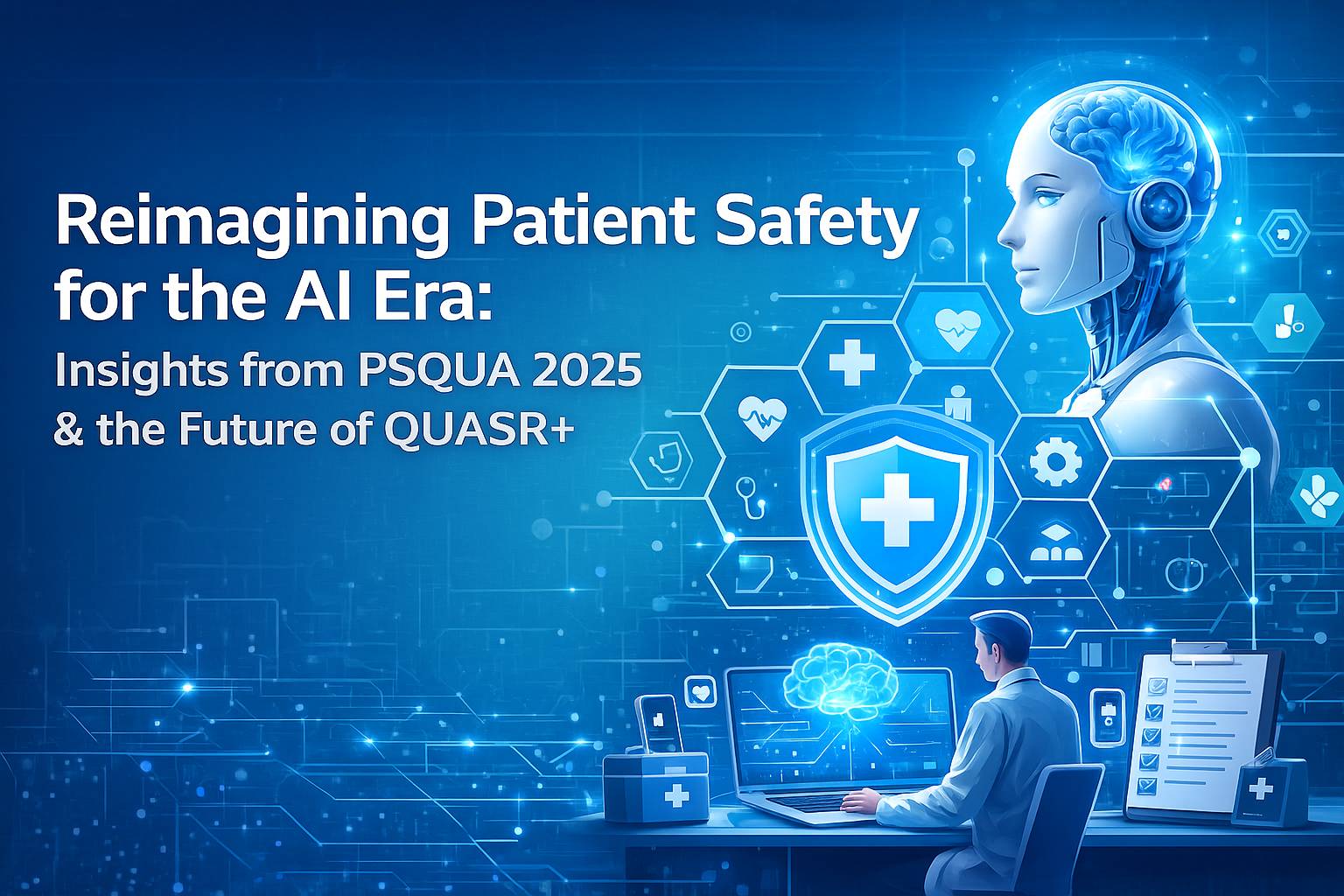
Introduction
Senior care facilities play a crucial role in caring for the elderly, but face unique quality and safety challenges. Understanding these challenges and the regulatory requirements is essential to ensuring care quality, resident safety, and compliance. This blog explores the complexity of these challenges, the pivotal role of incident reporting, and examples of effective incident reporting leading to better outcomes.
Table of Contents
Quality and Safety Challenges in Senior Care
Senior care providers encounter major quality and safety challenges, which include
- Complex Health Needs
- Seniors often have multiple chronic conditions, which complicate care plans and raise the risk of adverse events.
- Polypharmacy is common among seniors, increasing the risk of drug reactions and errors.
- Cognitive Decline and Physical Frailty
- Many seniors may have physical or cognitive challenges, making them more susceptible to harm. Cognitive decline can make medication adherence difficult.
- Conditions such as dementia and Alzheimer’s can impair judgment and communication, making it difficult for the residents to understand instructions.
- Age-related muscle weakness and balance increase the risk of falls and injuries. Reduced mobility can also contribute to pressure ulcers and other complications.
- Staffing Challenges
- Senior care settings often encounter staffing shortages and high turnover rates.
- Ensuring that personnel are well-trained and possess the required competencies to meet the unique needs of elderly patients presents a challenge.
- Continuous specialized training programs are crucial to equip caregivers with skills in geriatric care, dementia management, and emergency response.
- Safety Challenges
- Ensuring safety in senior care is crucial due to the vulnerability of elderly individuals.
- Common incidents include falls, medication errors, pressure injuries, and infections.
- Preventing these incidents requires proactive measures and strict protocols.
- Abuse, Neglect and Behavior-related Challenges
- Reports of physical, emotional, financial abuse, and neglect in some senior care settings.
- Incidents that must be reported include improper use of force, misuse of restraints, and inappropriate sexual conduct.
- Conflicts among residents and unexplained absences are common incidents.
Regulations and Compliance Requirements
Various countries have developed regulatory frameworks to maintain quality and safety in senior care environments. The USA, UK, and Australia have implemented national standards for aged care.
- USA: The Centers for Medicare & Medicaid Services (CMS) set federal standards for nursing homes and long-term care facilities, including guidelines for staffing, care plans, medication management, and infection control. The Office of Inspector General (OIG) and state health departments oversee licensing and inspections.
- UK: The Care Quality Commission (CQC) regulates health and social cares services in England. CQC standards cover safety, effectiveness, care quality, and leadership. Regular inspections ensure compliance and highlight areas for improvement. CQC uses a rating system to provide public information about the quality of care of providers.
- Australia: The Aged Care Quality and Safety Commission (ACQSC) enforces the Aged Care Quality Standards, which apply to residential care, home care, and flexible care services. These standards emphasize consumer dignity, ongoing assessment, care planning, and risk management.
In Australia, The Serious Incident Response Scheme (SIRS) plays a crucial role in regulating and monitoring incidents within senior care facilities. SIRS categorizes incidents as either Priority 1 or Priority 2, based on their severity. Aged care providers are required to implement an effective incident management system and must notify the ACQCS about reportable incidents. The timeframe for reporting depends on the priority level of the incident.
Roles of Incident Reporting
Incident reporting plays a vital role in senior care setting in ensuring the safety and well-being of residents. Here is a breakdown of the key roles:
- Enhancing Resident Safety:
- Identifying Risks: Incident reports help identify potential hazards and risks within the facility, such as fall risks, medication errors, and unsafe environmental conditions. By reporting incidents and near misses, facilities can proactively address potential problems before they lead to serious harm.
- Preventing Future Incidents: Analyzing incident reports allows senior care facilities to identify patterns and trends, enabling them to implement corrective actions and prevent similar incidents from occurring in the future.
- Improving Care Quality: Incident reporting contributes to continuous quality improvement by providing valuable data that can be used to refine care practices and protocols.
- Facilitating Organizational Learning:
- Root Cause Analysis: Incident reports help identify the underlying causes of incidents and address systemic issues.
- Promoting a Culture of Safety: Encouraging staff to report incidents without fear of reprisal fosters a culture of safety and open communication, which is essential for improving safety.
- Sharing Best Practices: Incident reports can be used to share lessons learned and best practices among staff, promoting a culture of continuous learning and improvement.
- Ensuring Regulatory Compliance and Legal Protection:
- Meeting Regulatory Requirements: Senior care facilities must report certain incidents to regulatory bodies. Incident reporting systems help ensure compliance.
- Providing Legal Documentation: Accurate and thorough incident reports provide essential documentation that can be used in legal proceedings, if necessary.
- Improving Communication and Collaboration:
- Facilitating Communication: Incident reports facilitate communication among staff, residents, and family members, ensuring that everyone is informed about notable events.
- Enhancing Care Coordination: Incident reports can help improve care coordination among different healthcare providers, ensuring that residents receive consistent and appropriate care.
Incident reporting is essential for improving elderly care quality and safety, and for fulfilling reporting obligations.
Use Cases for Effective Incident Reporting
Here are five use cases demonstrating how effective reporting can lead to better outcomes in senior care facilities.
- Fall Prevention
- Scenario: A resident slips and falls in the bathroom, sustaining minor injuries.
- Effective reporting: Detailed reporting of the fall incident, details of the circumstances, and the resident’s condition.
- Better outcome: Identification of fall hazards and implementation of additional preventive measures such as grab bars and non-slip mats, leading to fewer falls and injuries.
- Medication Errors
- Scenario: A resident is given the wrong medication, resulting in adverse effects.
- Effective reporting: Prompt and accurate reporting of the error, including the medication involved and the resident’s reaction, allows for immediate intervention and prevention of future errors.
- Better outcome: Quick intervention to mitigate adverse effects and review of procedures to improve medication safety.
- Infection Control
- Scenario: A cluster of residents develops a respiratory infection.
- Effective reporting: Timely reporting of infection symptoms and cases allows for rapid implementation of infection control measures (e.g., isolation, enhanced sanitation).
- Better outcome: Containment of the infection and prevention of widespread outbreaks.
- Abuse and Neglect
- Scenario: A resident exhibits unexplained bruising or changes in behavior.
- Effective reporting: A clear and confidential reporting system encourages staff and family members to report suspected abuse or neglect.
- Better outcome: Protection of vulnerable residents and accountability for perpetrators.
- Equipment Malfunction
- Scenario: A resident’s wheelchair malfunctions, causing a minor injury.
- Effective reporting: Detailed reporting of the malfunction allows for prompt repair or replacement of the equipment and prevention of future incidents.
- Better outcome: Improved equipment safety and reduced risk of injuries.
By fostering a culture of open reporting and implementing effective systems, senior care facilities can significantly enhance resident safety and wellbeing.
Key Considerations for Effective Incident Reporting
Senior care providers should consider the following to optimize the value of reporting and encourage ongoing participation.
- Non-Punitive Culture: It is crucial to create a “just culture” where staff feel safe reporting incidents without fear of reprisal. The focus should be on learning and improvement, not blame.
- Online Reporting: Ease of reporting and clear procedures encourage prompt reporting. Well-designed forms capture all incident details, and a streamlined workflow ensures efficiency.
- Thorough Investigation: Investigate incidents thoroughly to identify root causes and contributing factors.
- Feedback and Follow-Up: Staff should receive feedback on reported incidents and take recommended actions.
Conclusion
Senior care facilities face a unique set of challenges. Ensuring safety is a critical aspect of providing high-quality care to residents. Incident reporting plays a key role in this process, enabling facilities to identify risks, enhance practices, and prevent harm to residents. By understanding and implementing effective strategies, senior care providers can improve care quality and safeguard the well-being of residents and ensure compliance to regulatory requirements.
Related Blogs:
Start your 14-day free trial or get a demo of our premium software.






